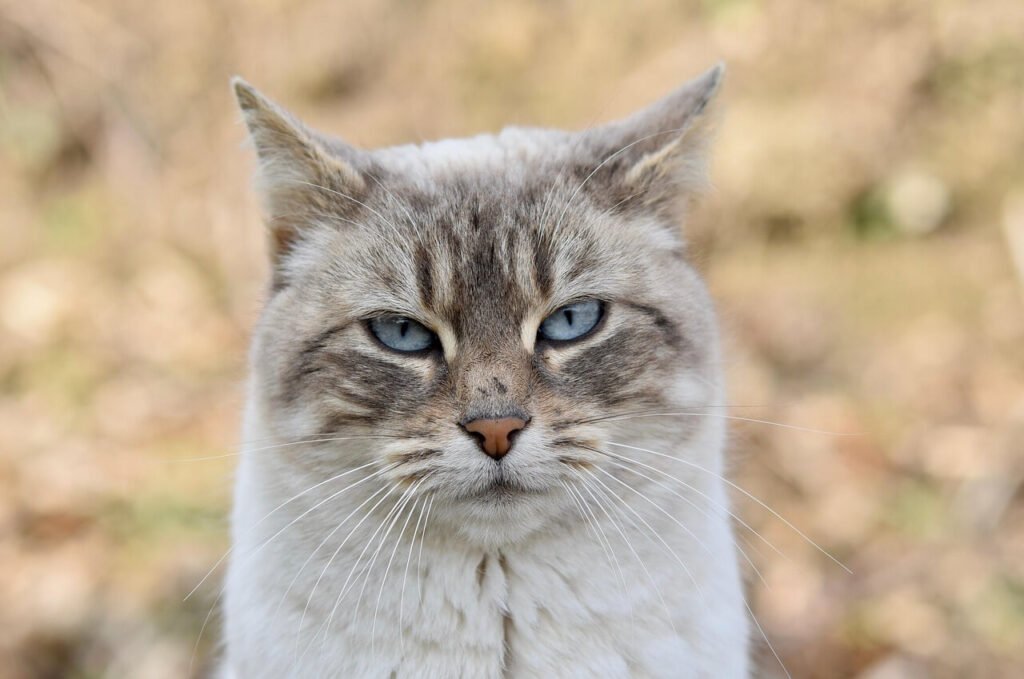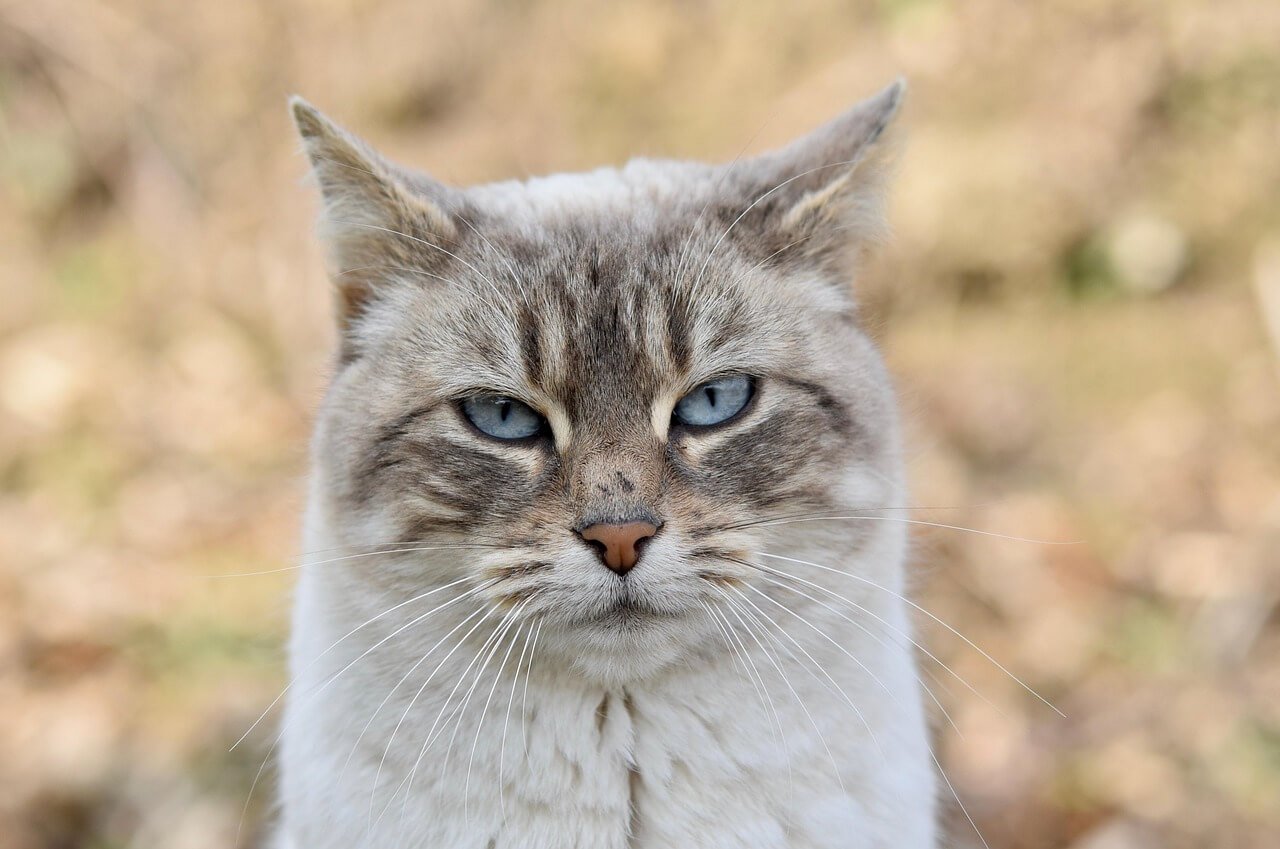Understanding Why Cats Swish Their Tails
If you’ve ever spent time observing your feline companion, you’ve likely noticed their tail swishing back and forth. This seemingly simple movement can carry a wealth of meaning, reflecting your cat’s emotions, intentions, and even their health. While it might look like random behavior, a cat swishing their tail is often communicating something important—whether it’s excitement, frustration, or a need for space. In this article, we’ll delve into the reasons behind this intriguing behavior, helping you decode what your cat is trying to tell you. By understanding the nuances of tail movements, you’ll be better equipped to respond to your cat’s needs and strengthen your bond.
What Does It Mean When Your Cat Swishes Their Tail?
A cat’s tail is one of their most expressive features, and its movements can reveal a lot about their mood and mindset. Tail swishing, in particular, can indicate a wide range of emotions or reactions. Here are some common reasons why cats swish their tails:
Playfulness and Excitement :
A gently swishing tail often signals that your cat is feeling playful or anticipatory.Frustration or Overstimulation :
Rapid or forceful tail swishing may indicate irritation or discomfort.Focus and Concentration :
Cats may swish their tails when they’re intently watching prey or focusing on something.Anxiety or Uncertainty :
Slow, deliberate tail movements can suggest nervousness or hesitation.Aggression or Warning :
A violently swishing tail paired with other signs like growling or hissing indicates anger.
Paying attention to the context and intensity of the tail swishing can help you interpret your cat’s emotions accurately. Always observe their body language as a whole to fully understand their message.
Tail Swishing in Context: What Your Cat Might Be Saying
While tail swishing is a common behavior, its meaning can vary depending on the situation. By analyzing the scenario in which your cat swishes their tail, you can gain deeper insights into their feelings and intentions. Here are some examples:
During Playtime :
If your cat swishes their tail while chasing toys, it likely means they’re enjoying themselves.When Petted Too Much :
A flicking tail during petting sessions may signal overstimulation or discomfort.Near Food or Treats :
A softly swaying tail could indicate anticipation or excitement about mealtime.Around Other Pets :
Tail swishing in the presence of other animals may reflect tension or territorial instincts.In Unfamiliar Environments :
A slow-moving tail in new surroundings suggests caution or unease.
Context is key to interpreting your cat’s tail swishing. By observing their behavior in specific situations, you can respond appropriately and ensure their comfort.
Check this guide 👉Decoding the Mystery of Cat Tail Wagging: Best 7 Tips!
Check this guide 👉Cat Losing Hair at Base of Tail: Best 7 Expert Tips!
Check this guide 👉Why Is My Cat Flicking the End of Their Tail? Best 7 Tips!

Emotions Expressed Through Tail Swishing | Possible Actions to Take |
|---|---|
Playfulness and excitement | Engage in interactive playtime |
Frustration or overstimulation | Give your cat space and avoid petting |
Focus and concentration | Allow them to explore or hunt safely |
Anxiety or uncertainty | Provide reassurance and a calm environment |
Aggression or warning | Avoid direct interaction and monitor closely |
Could Your Cat’s Tail Swishing Indicate a Health Issue?
While tail swishing is usually a behavioral cue, it can sometimes point to underlying health problems. If the behavior seems excessive, unusual, or accompanied by other symptoms, it’s worth investigating further. Here are potential health-related causes:
Pain or Discomfort :
A cat may swish their tail if they’re experiencing pain in their back, tail, or hindquarters.Skin Irritation or Allergies :
Itching or discomfort caused by allergies or parasites can lead to excessive tail movement.Neurological Issues :
Conditions affecting the nervous system may cause involuntary tail swishing.Urinary Tract Infections (UTIs) :
Cats with UTIs often flick their tails due to discomfort in the lower abdomen.Stress or Anxiety Disorders :
Chronic stress can manifest in repetitive tail movements.
If you suspect a health issue, consult your veterinarian promptly. Early diagnosis and treatment can prevent complications and improve your cat’s quality of life.
How to React When Your Cat Swishes Their Tail
Understanding your cat’s tail swishing is only half the battle; knowing how to respond is equally important. Here are some tips to help you handle different scenarios effectively:
Observe Before Acting :
Take a moment to assess your cat’s overall body language before engaging.Respect Their Boundaries :
If the tail swishing indicates irritation, give your cat space to calm down.Redirect Energy Positively :
For playful swishing, offer toys or activities to channel their energy constructively.Create a Calm Environment :
Minimize loud noises or sudden changes to reduce anxiety-related tail movements.Monitor for Consistency :
Keep track of recurring patterns in tail swishing to identify potential issues.
By responding thoughtfully, you can address your cat’s needs and foster a stronger connection. Remember, patience and attentiveness go a long way.
The Hunter’s Instinct: Why Cats Swish Their Tails While Stalking Prey
Cats are natural-born hunters, and their tail movements often play a role in their predatory behavior. When your cat is focused on “hunting” a toy or even an imaginary target, their tail swishing can reveal their heightened state of concentration. Here are some insights into this behavior:
Tail as a Balancing Tool :
A gently swishing tail helps cats maintain balance while stalking or pouncing.Visual Distraction Minimization :
Slow tail movements reduce the chances of alerting prey to their presence.Building Anticipation :
The swishing motion may indicate excitement as they prepare to strike.Precision and Focus :
Cats use their tails to fine-tune their body positioning for an accurate attack.Mimicking Wild Instincts :
Even domesticated cats exhibit these behaviors as a remnant of their wild ancestry.
Understanding tail swishing during hunting highlights the innate instincts that make cats such skilled predators. Observing this behavior can deepen your appreciation for their natural abilities.
Reading the Room: How Cats Use Tail Swishing Around Others
When cats interact with humans, other pets, or even unfamiliar animals, their tail swishing can communicate a wide range of emotions. These movements help them navigate social dynamics and express their feelings. Here’s what to look for:
Friendly Greetings :
A slow, relaxed tail swish may indicate curiosity or affection toward a familiar face.Territorial Marking :
Cats sometimes swish their tails to spread their scent and assert ownership of a space.Conflict Avoidance :
A tense or rapid swish can signal discomfort in the presence of another animal or person.Playful Invitation :
A playful tail flick might be an invitation to engage in interactive games or activities.Defensive Posturing :
Aggressive tail swishing paired with arched backs warns others to back off.
By interpreting tail swishing in social contexts, you can better understand your cat’s relationships and ensure harmonious interactions.
Adapting to Change: How Cats React to New Surroundings
Cats are creatures of habit, and sudden changes in their environment can trigger stress or anxiety, often reflected in their tail movements. Tail swishing in these situations can provide clues about how your cat is coping. Here’s what to consider:
Exploration Mode :
A cautious tail swish may indicate curiosity as they investigate new spaces or objects.Sign of Overwhelm :
Rapid or erratic tail movements suggest they’re feeling overwhelmed by the change.Seeking Reassurance :
A slow, deliberate swish might mean they’re looking for comfort from their human companion.Marking Familiarity :
Cats may swish their tails to mark new items or areas with their scent, creating familiarity.Stress Relief :
Repetitive tail swishing can serve as a self-soothing mechanism during uncertain times.
Understanding how environmental changes affect your cat’s tail swishing allows you to provide support and reassurance. With time and patience, your cat will adapt to their new reality.
Frequently Asked Questions About Cat Tail Swishing
Why does my cat swish their tail while lying down?
It could mean they’re relaxed but alert, or they’re processing emotions like mild frustration.
Is tail swishing always a sign of aggression?
No, it depends on the context. Aggression is usually accompanied by other warning signs.
Should I stop petting my cat if they start swishing their tail?
Yes, it’s best to pause and give them a break to avoid overstimulation.
Can kittens swish their tails too?
Absolutely! Kittens use their tails to communicate just like adult cats.
How do I know if my cat’s tail swishing is normal?
Look for consistency in behavior and consult a vet if the swishing seems excessive or abnormal.
Final Thoughts: Listening to Your Cat’s Tail Language
A cat’s tail is far more than just an adorable appendage—it’s a powerful tool for communication. From expressing joy to signaling distress, tail swishing is one of the many ways your feline friend conveys their inner world. By paying attention to these subtle cues, you can deepen your understanding of your cat’s needs and strengthen the bond you share. Whether it’s through play, patience, or professional care, responding to your cat’s tail swishing with empathy ensures a happier, healthier relationship. So next time you see that tail in motion, take a moment to listen—your cat has something important to say.
Understanding Cryptosporidium in Cats: Best 7 Expert Tips! – Spot symptoms, treat safely, and stop parasite spread in your home.
Understanding Cryptosporidium in Dogs: Best 7 Expert Tips! – Learn symptoms, treatment & prevention for this stubborn gut parasite.
Understanding Syringomyelia in Cats: Best 7 Expert Tips! – Recognize signs, manage pain, and support your cat’s neurological health with vet-backed guidance.
Understanding Syringomyelia in Dogs: Best 7 Expert Tips! – Expert insights on symptoms, MRI diagnosis, pain management & quality of life.





